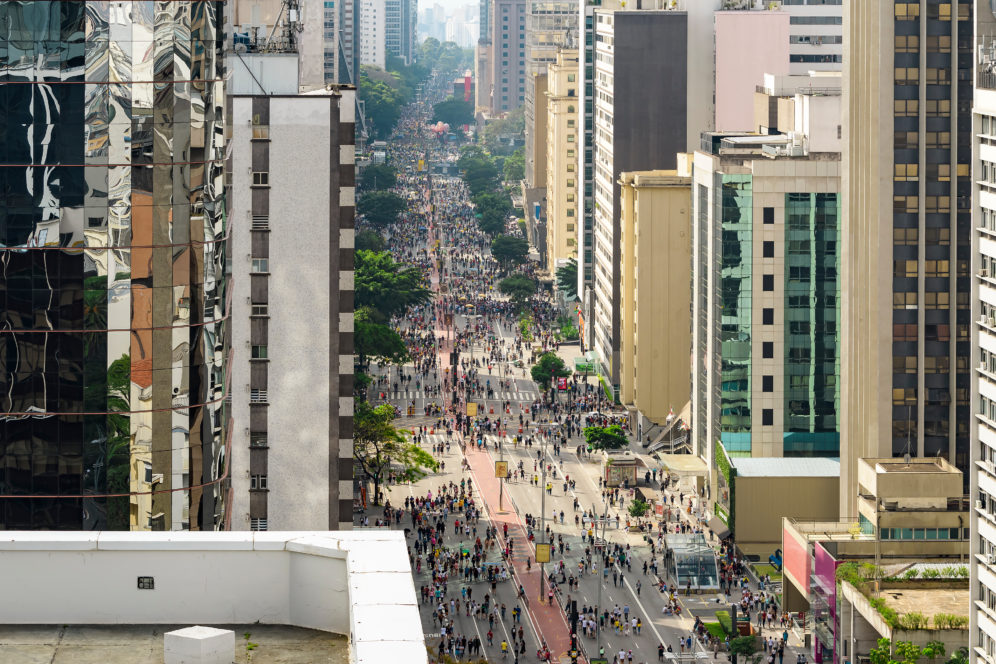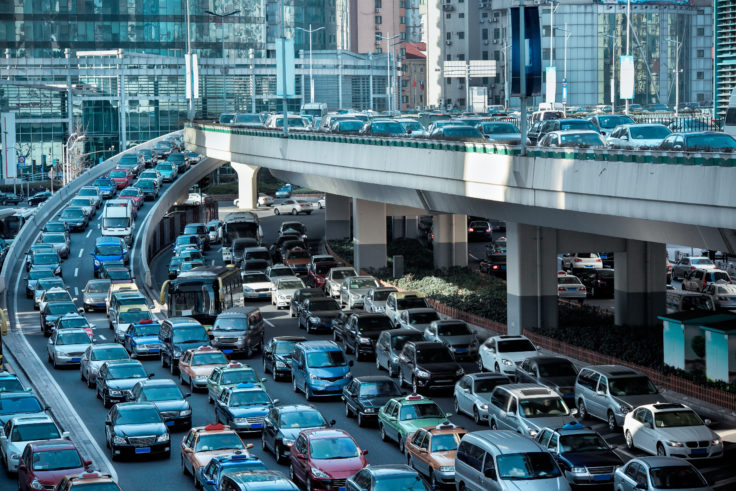 Avenida Paulista in São Paulo during a popular Car Free Day in 2019.
Avenida Paulista in São Paulo during a popular Car Free Day in 2019.
January 13, 2021
Sustainable Resolutions for a New Year
After such a tumultuous and challenging 2020, it seems impossible to make New Years’ Resolutions with the end nowhere in sight and without fear of jinxing an already chaotic 2021. However, this past year has been a reckoning on how much can and should change within our cities, and governments should look toward the upcoming year with a renewed understanding of what has to change in cities to build resilience for the decades to come.
Enumerated in no specific order, here are some of ITDP’s resolutions, or perhaps a 2021 wish list.
1. Zero Emission Areas
Low and Ultra Low Emission zones, which are prevalent across European and some Asian cities, often function on a pricing structure in which high polluting cars enter by paying a fine or toll. Cities should focus on creating Zero Emission Areas (ZEAs) also referred to as Zero Emission Zones. With the higher standards enforced by ZEAs, very few vehicles are able to enter, thus effectively creating fully pedestrianized spaces. What makes ZEAs more compelling is that they can capture many interventions such as air quality improvements, electric buses, and cycling infrastructure at the same time. In the Global South, ZEAs are not yet standard in cities, but can be.

2. Leapfrogging Technology Innovation
So much of our world is digitized, from how we shop for things, to how we communicate. Transit systems have not always been early adopters of specific technologies, but the pandemic pushed some adoptions of technologies, like cashless payments. Real time vehicle tracking already exists on driving apps, but can be utilized to share arrival information with transit commuters, particularly those using multi-modal systems. Technologies like dynamic pricing on roads and parking can enhance existing infrastructure, allowing systems to leapfrog ahead.

3. Finally Give Pedestrians the Right of Way
The pandemic showed how much space is wasted on car movement and car storage: with open air dining taking over parking spaces and streets closing down to cars and opening to recreation, it was starkly evident just how inappropriately utilized streets have been. Walkable streets took on restored value; people embraced outdoor spaces to walk, and sit, greet, and gather safely. Pedestrianizing space has always been at the top of sustainable transportation wish lists, but with these recent lessons of the pandemic, there is renewed momentum and optimism. Now is the moment to seize upon temporarily pedestrianized streets and make them permanent.

4. Keep Cycling
What also became abundantly clear during the pandemic was just how much people enjoy riding bicycles. From Jakarta, which saw in some locations 1000 percent increase in cycling, to cities all over the world constructing emergency cycle lanes, two wheels were clearly better than four. People took to the streets; bicycle sales have increased significantly in 2020. Cycling is carbon free, inexpensive, and with supporting infrastructure, safer than driving. People enjoyed cycling for recreation and commuting. It would behoove planners and policymakers alike to respond to this obvious need and demand by making temporary lanes permanent and expanding and building infrastructure, so as not to miss this opportunity.

5. Rethink Car Culture
Car sales increased during the pandemic. Municipal leaders encouraged people to drive as the safe option. This knee jerk response: that cars are simply the most efficient and safest form of transport, has got to change. In 2020, of the top 10 best-selling vehicles in the US, seven of them were either SUVs or pick-up trucks, both types known to be more wasteful of gas and more dangerous to pedestrians. In the US as well, despite less driving, the rates of pedestrian fatalities due to cars and traffic fatalities rose. Globally, 1.35 million people die every year due to road crashes, these deaths are preventable tragedies. Cars are polluting, they are dangerous to drivers, passengers, and pedestrians. They are not more efficient, but with a deeply entrenched car culture, they remain the default mode of transport for many due to lack of viable alternatives.

The pandemic is not over, but some of its lessons are ripe to be put to use. Making permanent many of the valuable temporary interventions is a great way to start 2021.
